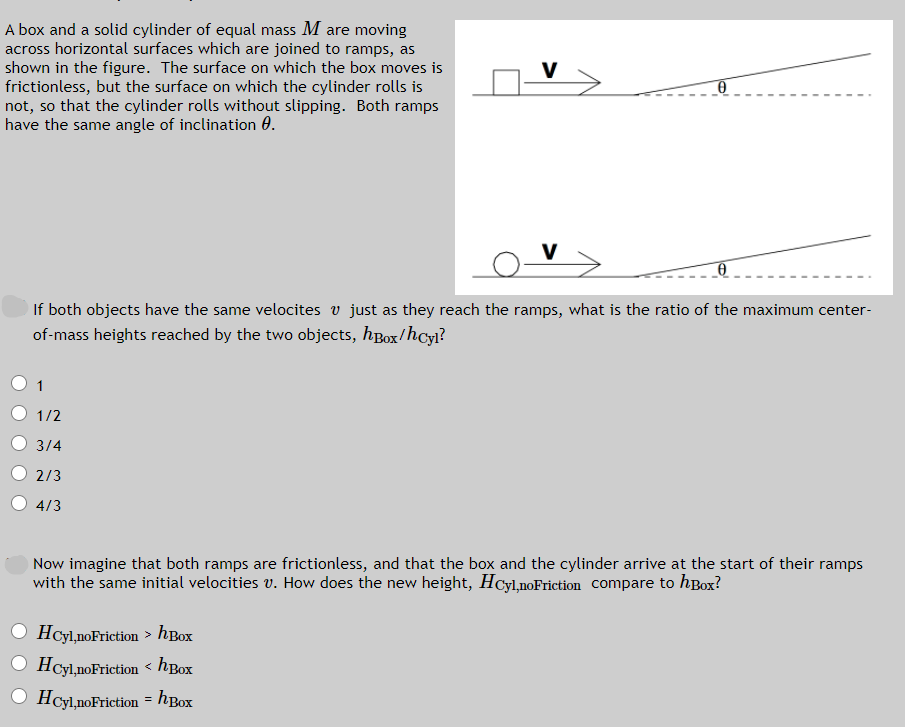A box and a solid cylinder of equal mass M are moving across horizontal surfaces which are joined to ramps, as shown in the figure. The surface on which the box moves is frictionless, but the surface on which the cylinder rolls is not, so that the cylinder rolls without slipping. Both ramps have the same angle of inclination 0. V V If both objects have the same velocites v just as they reach the ramps, what is the ratio of the maximum center- of-mass heights reached by the two objects, hpox/hcyl? 1/2 3/4 2/3 4/3 Now imagine that both ramps are frictionless, and that the box and the cylinder arrive at the start of their ramps with the same initial velocities v. How does the new height, Hcyl,noFriction compare to hBox? O Hcyl,noFriction > hBox O Hcyl,noFriction < hBox O Hcyl,noFriction = hBox
Rigid Body
A rigid body is an object which does not change its shape or undergo any significant deformation due to an external force or movement. Mathematically speaking, the distance between any two points inside the body doesn't change in any situation.
Rigid Body Dynamics
Rigid bodies are defined as inelastic shapes with negligible deformation, giving them an unchanging center of mass. It is also generally assumed that the mass of a rigid body is uniformly distributed. This property of rigid bodies comes in handy when we deal with concepts like momentum, angular momentum, force and torque. The study of these properties – viz., force, torque, momentum, and angular momentum – of a rigid body, is collectively known as rigid body dynamics (RBD).

Step by step
Solved in 2 steps with 2 images







